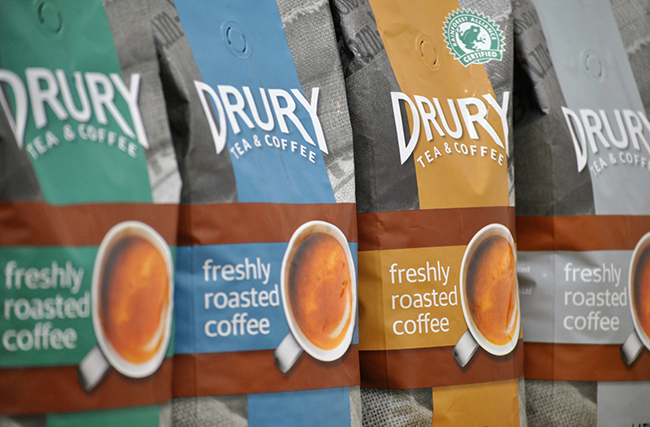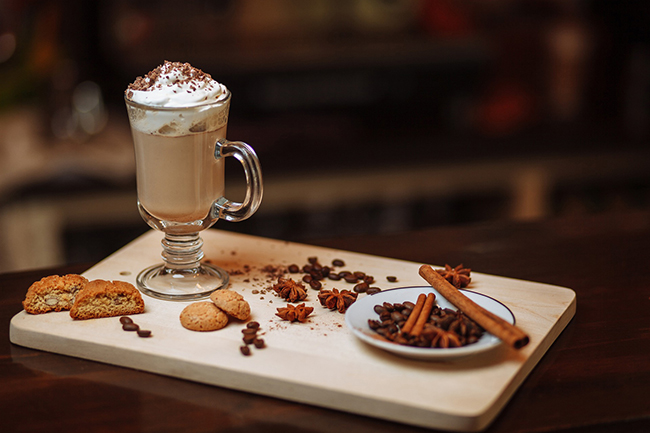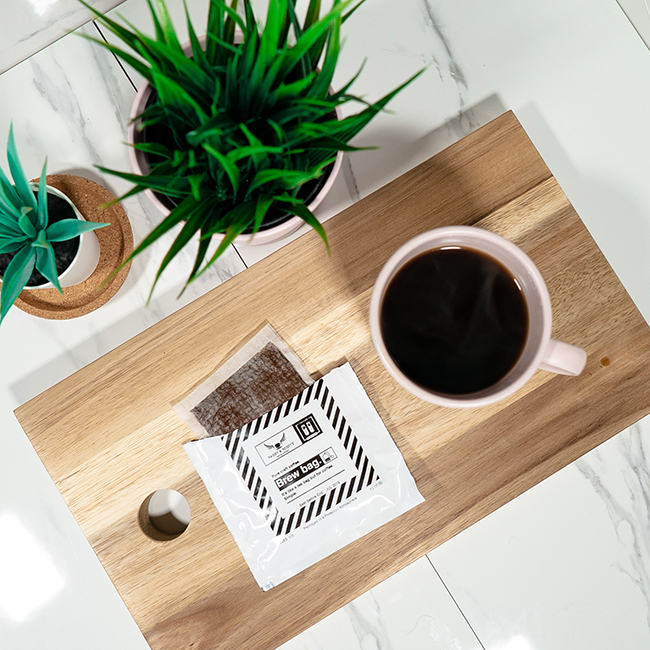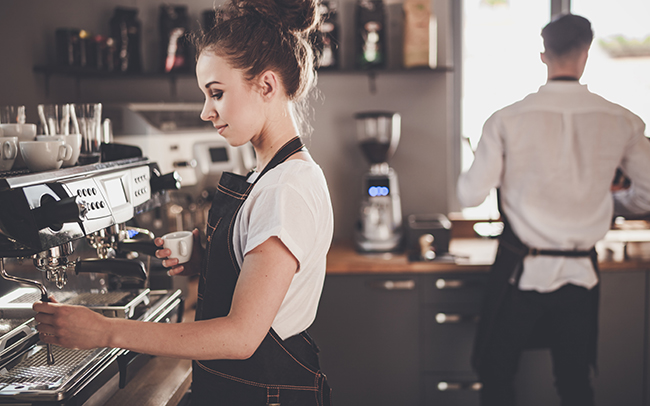The coffee market is now so saturated that it takes real effort to keep up with the competition. So what quality of coffee should you serve to ensure a profitable business without alienating regulars with a highbrow brew? Ian Boughton investigates
For the caterer who wants to assess business potential, truly useful facts in the coffee trade are hard to find, and most statistics are vague enough to stretch credibility. Does anyone really believe that 97% of coffee drinkers buy the beverage out of home, that 23% of people visit a coffee shop daily, or that 81% of all coffee drinkers visit a coffee shop weekly?
However, it is true that the number of coffee shops continues to rise (now reckoned to be more than 20,000 sites) from which the practical business conclusion must be that there is good coffee business to be had, but competition for it is daunting.
"Competition is now so fierce that losing 15% of your coffee trade to a new opening can be enough to bring a business down," says Marco Olmi, director at Drury Tea & Coffee. "This affects caterers of all kinds - everybody serving coffee, to staff or guests or delegates or whoever, is now facing more competition.
"Among the suppliers, competition for caterers' coffee business is now super- saturated - it's insane. But it's an illusion that this should mean it's a buyers' market: because all caterers are facing increased competition, they are all buying less, which means that as buyers they do not now have the volumes to command on price."
There is another illusion in the modern coffee trade, says consultant Tim Sturk. All that noise the cool coffee shops make about the concept of 'speciality' coffee can be a red herring. Sturk made his name as the first person to drive high-quality coffee through a contract caterer, and his work at BaxterStorey was followed by others in the contract sector. He has recently made the point that the amount of speciality coffee on the market is not in proportion to what is being sold and charged for as 'speciality'.
"Speciality coffee is quantified by licensed people," he explains. "Beans must score more than 80 points on a laid-down scale [out of 100, as set by the Speciality Coffee Association of America]. Anything below that is considered 'commercial' or 'commodity' coffee, with grades varying from high quality to low. In 2008 there were a handful of cafés and roasters offering speciality coffee, and since then there has been a hundredfold growth - but there has not been such growth in speciality coffee green bean production. Proportionately, 'speciality' should now account for upwards of half of coffee sales, but it doesn't; it hovers below 10%.
"This tells me that many who have jumped onto the speciality coffee bandwagon are really still buying commodity-grade coffee - and charging speciality prices for it. The sad thing is that consumers think the quality difference in coffee is the name on the cup.
"For the caterer, the truth is that there is a lot of great commercial-grade coffee being made well. It is not in the name, it is in the skill level and the business model."
Acceptable to all
Steve Lovegrove, head of business excellence at Compass, agrees. The caterer has in-house coffee brands Peak Street and Crackle & Hum. He says: "Typically, in a workplace or a conference venue, the coffee brand is less important to the consumer than convenience and quality - can they get it quickly and does it taste good? The key to coffee in larger sites is to focus on a coffee menu you can deliver well, consistently."
And so, for the mainstream professional caterer, 'speciality' coffee may be a distraction.
"For years, all the cool cafés were aiming speciality coffee at the 'educated palate'… and frankly, that isn't going to work for all your customers," says Olmi. "You have to look at where the acceptable middle ground lies - it is in being not bland, yet not too 'roasty', or too Italian, or too 'artisan'. Our Cuidado blend has the flavour and taste to be 'artisan' in character but not too much, and so is very popular - so there is a lot to be said for being in the middle ground. But you do have to know how to steer to the middle ground."
There is, agree coffee suppliers, a certain taste that suits the UK consumer. The favourite British coffee drink, reports the Monin flavour brand, is still the latte, followed by the cappuccino, both of which are milky coffees. It follows that the acceptable British mainstream taste is for a coffee that works well in 'cutting through' milk.
e fastest-growing beverage in coffee shops is the flat white, says Charlea Samuel, marketing manager at Jacobs Douwe Egberts. "You can set yourself apart with a more powerful espresso - our Piazza D'Oro Forza delivers a rich, chocolatey flavour that makes an enhanced foundation for a flat white. That kind of espresso shot can also be used to create drinks such as espresso corretto [espresso with a small amount of liquor] and caffè marocchino [espresso, cocoa powder and milk froth], which are well suited to the restaurant channel and will help differentiate your offering."
Scott Russell, chief executive of Paddy & Scott's, agrees that practicality in mass-footfall catering is one of the logics behind creating a blend. "Tiny coffee shops can use small batches of ridiculously expensive single-origin coffee, but this isn't sustainable if you cater for the masses. The secret in sourcing a taste profile that will suit all, be consistent, and keep to budget, is a really good tri-blend of coffees from three different regions or continents."
u can't fob the average coffee drinker off, says Rob Fredrickson, managing director of London and venues at Gather & Gather, part of the Mitie services group. "You can make bad coffee with great beans, but you can't make great coffee with bad beans. A quality product is absolutely your foundation for top-notch coffee. So, we have launched Camino, a coffee for workplace consumers, born as our best balance of sweetness, acidity and bitterness."
The Perla Bianca foodservice blend from Caffe Torelli comes from Marco Costa's experience of serving in his restaurants. "The coffee industry tends to concentrate on the quality of our espresso - this is a crucial starting point, but we must keep in mind that it must have enough depth of character to deliver flavour through milk. A hint of well-sourced robusta is very helpful in this."
It is the blend of arabica and robusta beans which gives the depth to cut through the milk in lattes and cappuccinos, whereas 100% arabica coffee has a softer, sweeter taste, says Richard Lowry, head of the Black + White Coffee Co at Bidfood.
"The natural sweetness from the arabica beans will make the coffee taste pleasant, and arabica alone would taste better in black coffee," agrees Mark Hodovan, national coffee excellence trainer at Tchibo, "but the slightly bitter taste of robusta helps cut through the milk, so a blend of robusta and arabica tends to suit all."
However, there may be new coffees coming into our blends, says Fabio Ferreira, founder of Notes Coffee in London, and that's a matter of global warming.
"The risk of a coffee shortage is imminent and virtually unstoppable," he says. "The rise in temperature will wipe out the coffee plantations in many countries, but we will see new coffee from cooler climates, and quite remarkable quality coffees are coming from some unexpected origins, such as China and Myanmar."
The daily grind
Having sourced the coffee, a major task in getting the best from it is in understanding freshness. But when working a site serving a high number of people, it is impractical to keep a close eye on every 'use by' label. Surprisingly, says Angus McKenzie, business manager at the Brew-It Group, technology has become the caterer's most important ally in freshness.
An unopened bag of coffee may stay acceptably fresh for months, but once a bag is opened, coffee will go stale within hours. Once ground, it goes stale in minutes. And this is why the sight of coffee hoppers with a couple of kilos of beans can be a danger sign. The use of the new 'on-demand' grinders, already familiar in coffee houses, is now a major contributor. In the old 'chamber' grinders, ground coffee could sit in a compartment and be stale before getting to the brewing stage. In 'on-demand' grinding, only the exact dosage for each drink is ground, only seconds before the coffee hits the brew water.
"Older grinders really are the enemy of freshness," says McKenzie. "The simplest thing for improving your coffee taste is to upgrade your grinder; the dosage and spillage saving should fund the upgrade. It's time to embrace technology, because smart, intelligent brewing ensures peak freshness."
Snap happy
Essential requirements in coffee involve not just taste, but visual elements, says Tom Gray, buyer at the Beacon purchasing organisation. He says he has observed a 'phenomenal rise in consumer-generated food and drink photography' - or customers snapping what is served to them to get a picture for social media.
There is now a distinct requirement for an 'Instagrammable element', confirms Lee Hyde, beverage innovation manager at Monin. Bright-pink beetroot lattes and carrot drinks made with the brand's flavoured syrups have proved to be more appealing than ever.
Suppliers
Beacon www.beaconpurchasing.co.uk
01904 695588
Bidfood www.bidfood.co.uk
01494 555900
Brew-It Group www.brew-it-group.co.uk
01246 454400
Compass www.compass-group.co.uk
0121 457 5000
Drury Tea & Coffee www.drurycoffee.com
020 7740 1100
Jacobs Douwe Ebgerts www.jacobsdouweegbertsprofessional.co.uk
0808 100 1030
Mitie www.mitie.com
0330 678 0710
Monin www.b-opie.com
01795 476154
Notes www.notescoffee.com
020 7537 2355
Paddy and Scotts www.paddyandscotts.co.uk
0844 477 8586
Tchibo www.tchibo-coffee.co.uk
01372 736250
Torelli www.northwestteas.co.uk
0151 703 0044
Continue reading
You need to be a premium member to view this. Subscribe from just 99p per week.
Already subscribed? Log In









